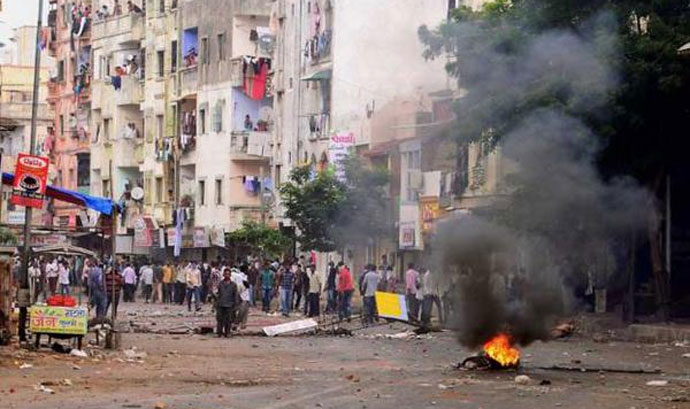Patel rally: When Modi turned Gujarat into Tiananmen Square

Prime Minister Narendra Modi has been an admirer of the Chinese model for long. His endorsement of its economic and trade policies has been publically acknowledged over a considerable period. But the way the government has handled the ongoing Gujarat stir provides insight into how future agitations and dissenting movements are likely to be tackled by the government.
The tactics, however, raise significant questions regarding violation of freedom of expression by the state and its attempts to regulate the citizens’ right to information. Sooner or later, questions are bound to be posed if people's freedom should be curtailed because the government is unable to maintain law and order. However improper though, such promptness was sadly not seen during the riots in 2002 though then too, the Bharatiya Janata Party was in power at the Centre and state. Such blocking was, however, done in Vadodara last year after two days of communal rioting, probably because the government did not wish to sully the prime minister's image of being a firm handler of situations.
The Tiananmen Square uprising in China in 1989 was called a near-revolution and powered by Fax machines. In June 1989, China was on the brink of a precipice and support for the uprising was greatly buoyed by the domestic network of fax machines that students created in universities and research institutes. In a country where information was restricted and newspapers were gagged, the fax machine became the instrument to transmit information and communicate with each other. Chinese students who were outside the country faxed information on developments within the country. These were then re-faxed throughout China. Consequently, contemporaries became leaders of the movement. Though the Chinese government eventually quelled the movement, it learnt a lesson that information clampdown was essential to snuff out dissent and this could no longer be done by controlling the media.
 |
This is precisely what was done in Gujarat from the morning of August 26 when data services on mobiles were switched off. Internet is now available only on broadband. This ensured a near-complete denial of internet services to citizens. In most parts of India, Gujarat included, the numbers of people who access the internet through the mobile network far outnumber those who use broadband connections. Even among those who access the internet with desktop computers or other mobile devices besides phones - laptops, tablets and iPads - a significant number use USB dongles of mobile service providers.
Besides blocking internet services, citizens of Gujarat have also been denied SMS facilities. Blocking of data services means that people are denied access to social media and even applications like WhatsApp. In spite of the argument being that this has been done to prevent the fuelling of rumours, the government action is a gross violation of the people's right to information and their freedom of expression. The government's case cannot be accepted because not all users of internet services can be accused of using data services only to spread disinformation. And if some of them do, why cannot the government, in real time, identify people who spread disinformation and arrest them?
In today's world, media censorship cannot be viewed in the narrow terms of television and print media. Attempts to block access to social media is evidence of doublespeak on the part of a government driven by a prime minister who is globally accepted as one of the principal advocates of social media.
If Modi beseeches people to send selfies with their daughters to start a nationwide campaign, then they are also going to use the same platform to exchange information on ongoing agitations and protest movements. The way to control mass agitations is through dialogue with the leaders and by effective policing that does not overreact. The government can also use internet and social media to disseminate its point of view.
There is unanimity that the police needlessly resorted to lathicharge when the crowd was returning home after the public meeting. There is consensus that police action precipitated the violence. But the government needed to accept that despite this, the agitation did not turn sectarian. Instead of using this as a window of opportunity, the government resorted to strong-arm tactics and created an atmosphere of fear. An entire community which was the government’s principal vote bank and constitute a sizeable part of Gujarat's population have been made to feel like adversaries with a suspect loyalty.
For the past two days, normalcy has returned to Gujarat without any attempt on the part of the government to hold formal talks with the agitators. But it would be wrong to assume that the movement has died down and curbing information flow and display of state might on the streets are sufficient to contain the agitation. An Emergency-like clampdown on means of communication cannot continue indefinitely, but this episode is indicative of the government's likely strategy to quell dissent anywhere in India. It would not be good for the health of democracy in the country. Coming close on the heels of the aborted attempt to block porn sites, the portents are not good.

